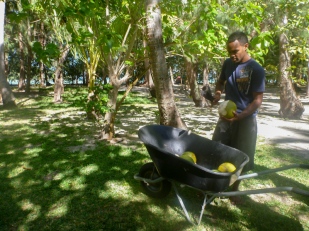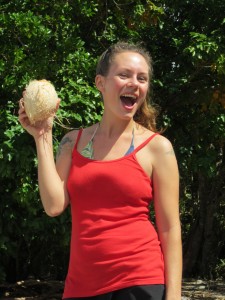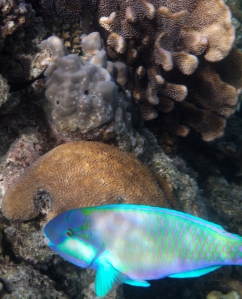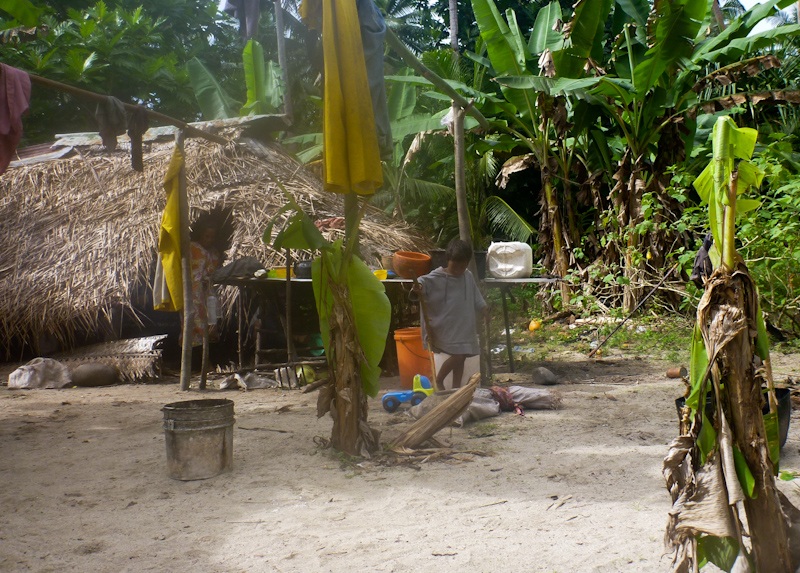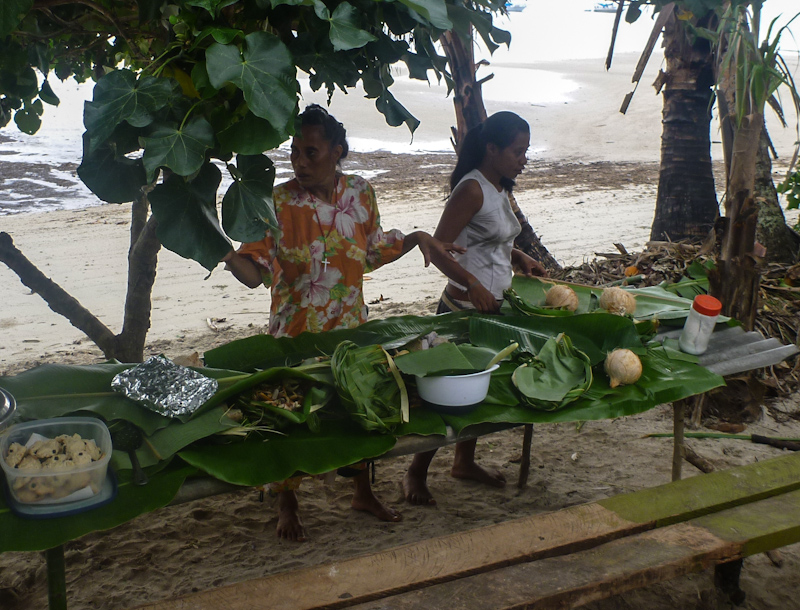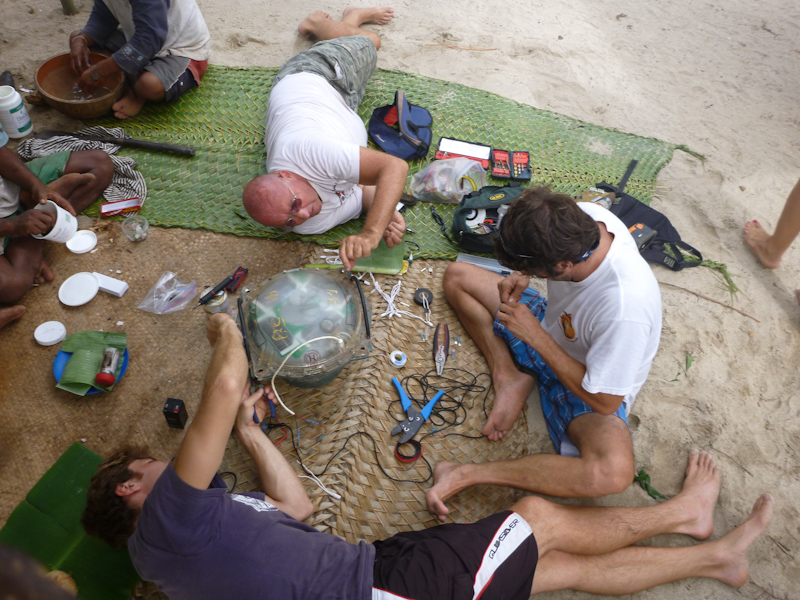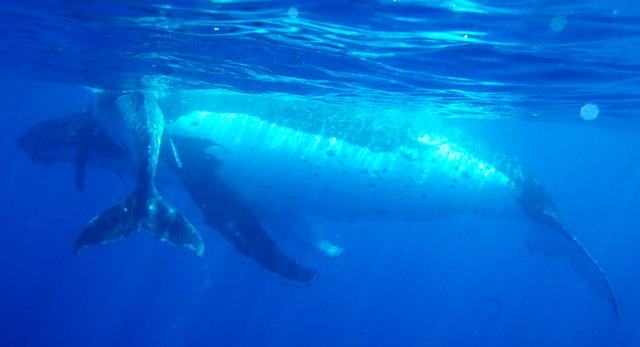Piko and our friends have been anchored in Viani Bay for a couple days. It is a large and deep bay that is inside the reef and surrounded by local homes. Jack – a large friendly Fijian who always wore a smile and a brimmed hat – rowed over and asked if we would like to go snorkel the reef the following morning. Of course it was an offer that we could not refuse, so we gladly told him yes.

The next morning we woke up to a clear sky. It was 8:00 and already the sun was burning hot. “Sun seems extra hot today.” I said. My shirt had already begun to stick to my back even though I had just put it on 5 minutes before. I wiped my brow.
Lauren B. looked up. “The sun hasn’t changed. It is just like it is every other day” he said. “Maybe if there are some solar flares.” Why I expected a reaction that was not technical and literal, I do not know.
Jack rowed to our boat from across the bay and brought us fresh papaya and bananas his family had picked that morning. “You like papaya?” he asked. If there was an answer other than a resounding YES, it did not belong in my universe. We all dinghied over to a catamaran named Resolute who had kindly agreed to tow our dinghies out to the reef pass so that we only had to motor back. Resolute was a huge boat, and shall henceforth be referred to as “the mothership”.
After anchoring the mothership near the reef we put on our gear and got in our dinghies. My gear included my mask, snorkel and a wetsuit. Even when the water is warm, it can still get cold if you are in for a long time and I didn’t want to miss out on anything if I got cold. Lauren B.’s gear consisted of snorkel, mask, shorts and that’s it. He never gets cold. Ever. Jack led the way in the front dinghy while towing the rest of us behind in our dinghies. He motored until we were outside the reef pass in the ocean part.
“Are you ready?” Jack asked. “Once you get out, you swim to the shallow side of the reef.” He pointed about 50 feet from where we were. “Then you will swim and go back and forth. You follow the bommies.”
We were excited and ready. The overhead sun was even hotter (I don’t care what Lauren B says!). I was fully zipped up in my 3 mil wetsuit and was quite certain that if I didn’t get in soon, I might pass out.
“Ok, go. Go!” Jack said. He was smiling big and I could tell that he was enjoying himself too. We got in the water and I could tell we were in about 50 or 60 feet of water. Jack had timed the snorkel so there was a gentle current that carried us through the pass (called a drift dive or drift snorkel). Drift snorkels are great because you conserve energy – letting the water do all the work. I could make out coral and fish but it was still a bit deep, so we continued to swim to where Jack had pointed.
When we reached the shallow part of the reef, I saw what all the fuss was about. The sea life was rockin’ and rollin’, with coral and fish abuzz everywhere. It was the most colorful reef I had seen in the South Pacific. The artist in me was going nuts. There were turquoise fish swimming in front of orange coral, and yellow fish swimming in front of purple coral. There were green fish with black and white stripes, and pink fish with yellow and orange spots.
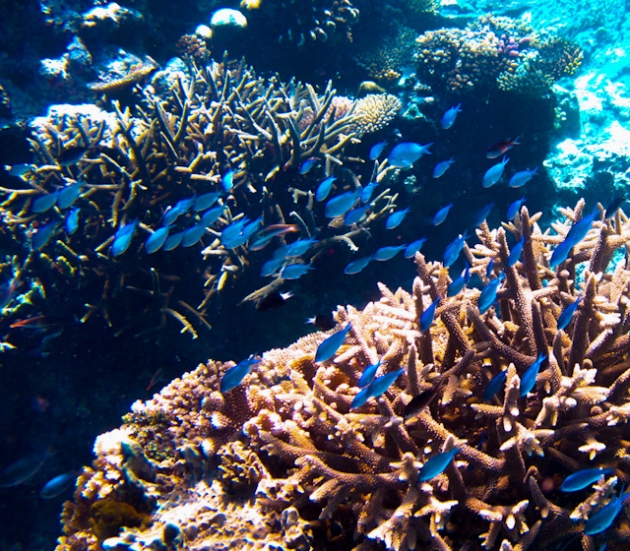
I stopped to take a look at a beautiful coral bed that had pieces shaped like large cabbages and mushrooms. Not the mushrooms you put in your stir-fry, but the big, wide, flat mushroom that the caterpillar from Alice and Wonderland laid on and smoked his pipe. A beautiful regal angelfish caught my shadow and swam underneath the lip of the mushroom coral. It was so cool – Lauren B. had to see!
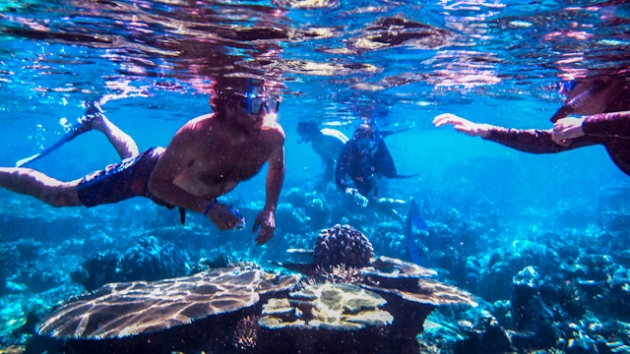
The incoming current finally placed us inside the reef and although there was more snorkeling to be done, my ankles were tired from my crummy fins. I hoisted myself up into our dinghy and removed the wetsuit. The sun was still beating hard, and it felt good. I leaned back in my bathing suit across the dinghy – soaking up the rays and thinking about how good life is. I felt someone tap my shoulder – it was Jack. “You are soaking up all the sun. Did you have a good snorkel?” he asked.
“I had a great snorkel. Fiji is beautiful.”

